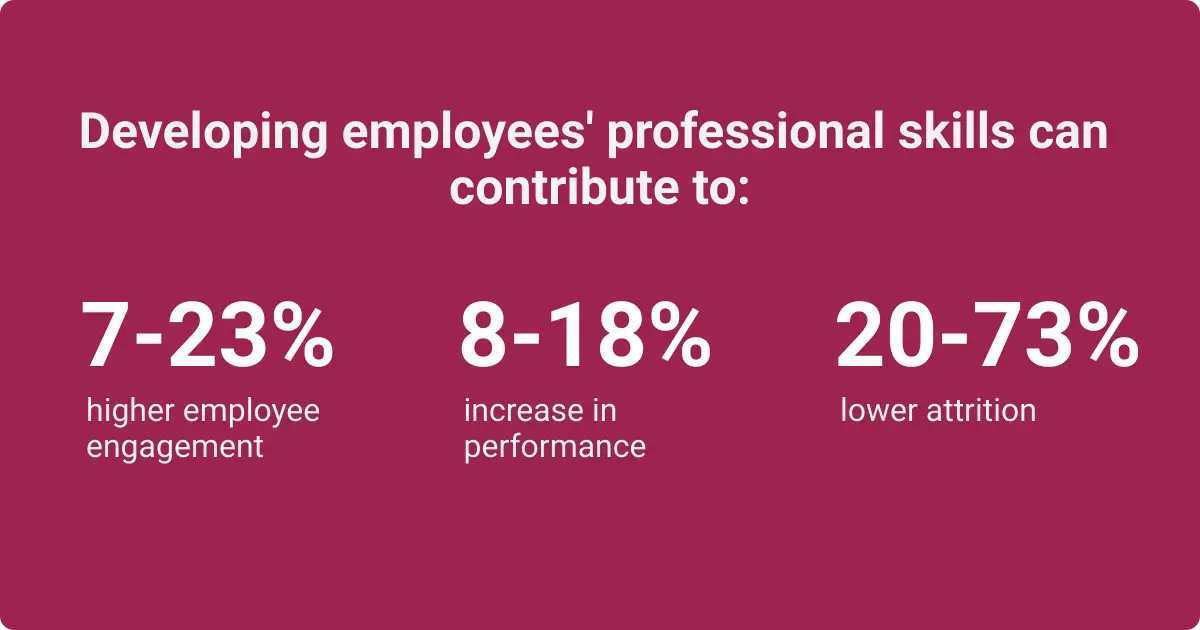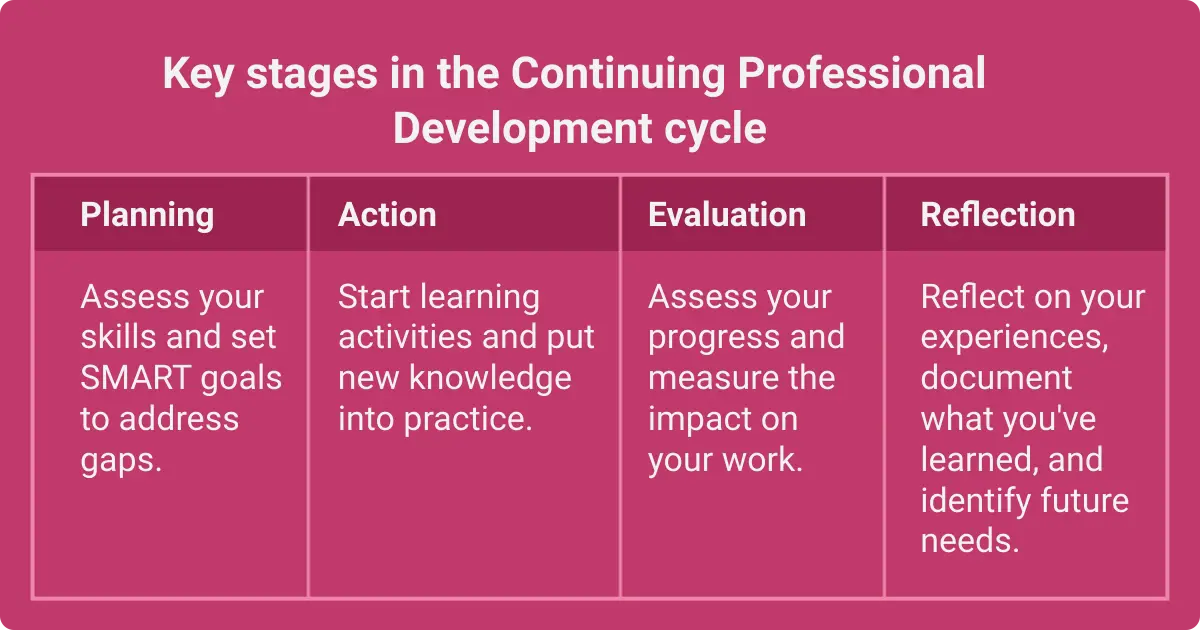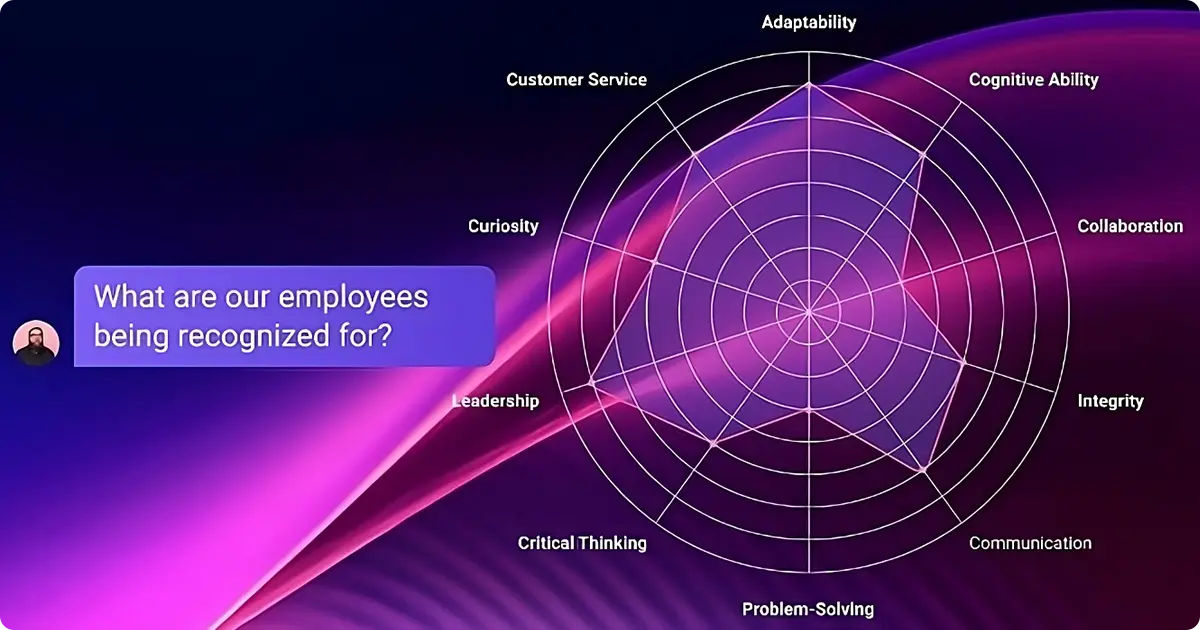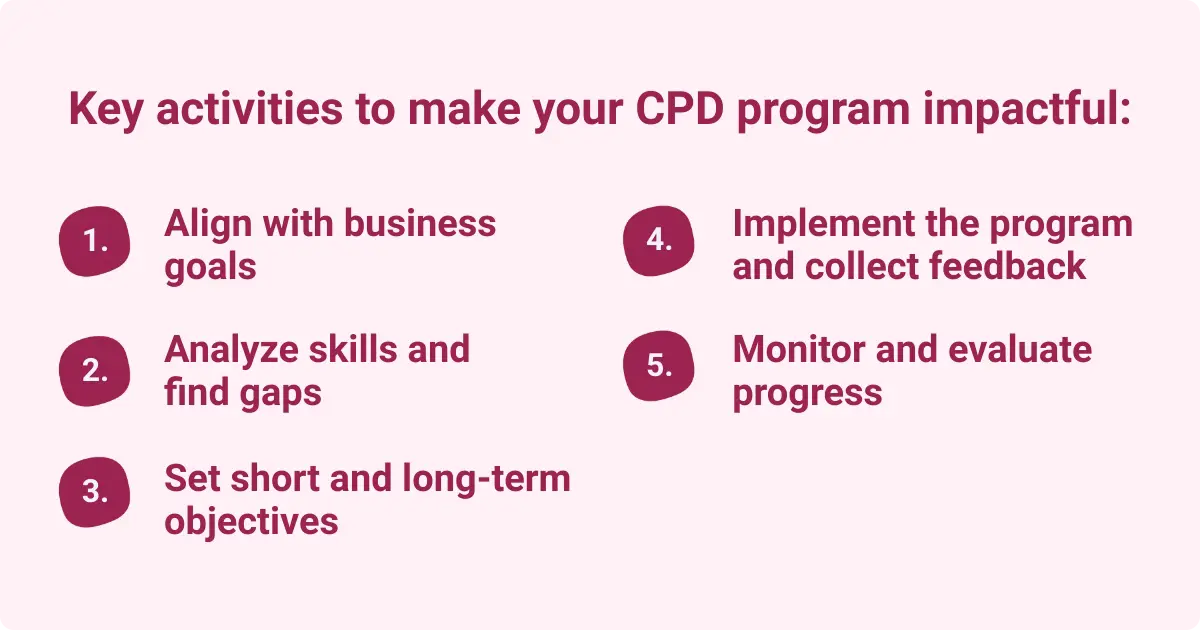Continuing Professional Development (CPD): A Quick Start Guide to Foster Lifelong Learning

Assessing and updating employee skills on an ongoing basis is critical to meet the shifting demands of today's world of work. Continuing professional development ensures employees possess the skills necessary for their roles, especially during rapid technological and cultural development.
This article will explore the benefits of strategic CPD activities and the keys to creating an impactful program that drives business outcomes.
Let's get started!
Why is continuing professional development important?
Employees are crying out for development opportunities. Our first Global Human Workplace Index survey in 2024 found that 86% of respondents actively sought to learn a new skill.
Continuous professional development can profoundly affect the employee experience, which in turn contributes to a company's performance and growth.
Performance, engagement, and retention improvement
Job satisfaction depends on employees feeling like they are progressing and that their efforts are recognized. Unfortunately, on average, Americans have been feeling stagnated at work for a while.
- In SHRM researchOpens in a new tab found that lack of career advancement opportunities was the second-leading cause of turnover.
- In Pew ResearchOpens in a new tab found that opportunities for promotion and training/development skills were among the lowest areas of job satisfaction for American workers.
- In LinkedIn's Learning Report Opens in a new tab declared that creating learning opportunities was the number one strategy for 90% of organizations concerned with retention.
As employees gain professional skills and progress in their careers, they contribute to the health and progress of the organization. GallupOpens in a new tab found that developing employees' strengths can lead to:
- 7-23% higher employee engagement
- 8-18% increase in performance
- 20-73% lower attrition
It's pretty simple. Happy employees have more energy to engage with their work and grow in their roles and companies, leading to more positive outcomes. And if leaders hope to keep their organization productive and profitable in the long term.
With record reports of burnout among knowledge workers, leaders cannot rely only on acquiring top talent. They must foster it.

Effective, long-term succession planning
More American workers will reach the traditional retirement age in 2024 than in previous years. With tenured workers about to exit en masse as organizations struggle to engage the emerging Gen Z workforce, ongoing employee training and development is vital for sustaining long-term growth and organizational stability.
CPD training ensures that existing employees have the skills and knowledge needed to step into critical positions, mitigating the loss of institutional knowledge. Defined career paths and a culture of learning and development are also essential for attracting and retaining Gen Z.
Motivated by their valuesOpens in a new tab and facing entry-level roles with increasingly unpredictable and complex responsibilitiesOpens in a new tab, this demographic has been particularly interested in potential employers' learning and development support. And vocal about their willingness to leave if their needs aren't metOpens in a new tab.
These digital natives are also familiar with rapid change, especially around technology. They developed alongside social media platforms and were some of the first to experience technology in the classroom. They don't have to adopt agile mindsets; adaptability is part of their lived experience.
As senior leaders struggle to steer their organizations through unpredictable market trends and adapt to emerging technologies, Gen Z is poised to help—if you support their professional development.
Better change management and resilience
CPD programs promote proactive learning and development, creating a systematic way to evolve your workforce as changes occur. Organization-wide use of the CPD framework helps employees maintain a competitive edge, updating skills and knowledge as industries, technologies, and roles evolve.
The process itself develops employees' growth mindset, improving their critical thinking, reflective learning, and well-being with each cycle. Employees control their goals and activities, giving them greater autonomy and engaging them in achievable milestones, which can reduce the stress and pressure of uncertainty.
The process impacts more than individual resilience. Fostering knowledge sharing and leadership development, especially through on-the-job or active learning activities, can reduce barriers to cross-functional problem-solving, collaboration, and innovation.
Key stages in the Continuing Professional Development cycle
Continuing professional development (CPD) is the ongoing process of identifying professional goals, developing a plan to achieve them, and documenting the experience. By following the CPD cycle, professionals can ensure that their development activities are purposeful, relevant to their roles, and effective in achieving their aims.
The CPD process has four core stages:
1. Planning
Identify your needs. Use self-assessment, feedback, and performance reviews to assess your skills and knowledge. Make sure this includes a mix of personal skills, technical and practical qualifications, and professional accomplishments.
Set goals and make a plan. Identify gaps, areas of growth, and opportunities to help you progress to the next stage in your career. Set OKRs or SMART goals based on these needs, outlining activities and resources required to achieve your objectives.
Tip: For the greatest impact, coach employees to develop realistic, attainable goals that are directly related to their job role (or desired role) and tied to strategic organizational aims.
2. Action
Start your learning activities. Attend training or coaching sessions, enroll in courses, attend webinars or conferences, and learn from peers in your role or industry.
Put new learning into practice. Applying your knowledge and skills helps to reinforce learning and demonstrate its practical benefits.
Tip: Self-directed learning can be most effective for learning a new technology, but active learning and mentoring can be more effective for competency development, such as management and leadership.
3. Evaluation
Assess your progress. Evaluate how effective each learning activity was in meeting your objectives. Assess the tools you used, the quality of understanding you gained, and how it affected your work.
Measure their impact. Consider the effect of your new skills and knowledge. Document the responsibilities you took on and projects you participated in and their outcomes on your professional practice and the broader company.
Tip: Your evaluation benchmarks will vary based on your goals. To gauge impact, you should review completed tasks, request peer feedback, or compare pre- and post-activity performance.
4. Reflection
Reflect on your experiences. Consider what you have learned and how it has influenced your work. Look back at successful and unsuccessful aspects and consider what you could do next and how you might change your approach.
Identify future needs. Writing down these observations helps you reflect on your progression and evolve your approach. Identify any personal and professional development needs or areas for further improvement.
This reflection feeds back into the planning stage, creating a continuous development cycle.
Software like Workhuman's Conversations®Opens in a new tab reenforce the CPD cycle by keeping a detailed history of goals, achievements, and feedback. Employees can drive regular check-ins with managers or mentors to share progress, reflect on their experience, and capture next steps on their journey.
Even without formal industry training requirements, this cycle provides a structured approach to personal and professional development that benefits individuals and organizations.

Creating a strategic CPD program to future-proof your company
Whether you're looking to launch your first program or improve on an existing framework, here are a couple of key activities to make your program impactful:
1. Align with business goals
Work with senior leadership and department heads to understand the company's short and long-term strategic objectives.
Identify skills and competencies critical to achieving these aims. A job analysis can help you understand how current and anticipated roles may affect your program priorities. Use these goals and needs to focus your organization assessment.
Tip: This phase will help you outline career pathways and progression plans for changing roles or succession planning needs, linking CPD activities to career advancement opportunities.
2. Analyze skills and find gaps
Create an employee skills inventory and leverage competency mapping with mapping skills worksheets to understand your workforce's qualifications and gaps. Gather data by assessing employee skills, self-assessments, evaluations, and recognition messages.
Identify high-potential employees and mentors. Find employees poised to advance in their careers to see quick results with your program and return to the organization. Develop mentors early to not only meet individual growth needs, but investment in the long-term effectiveness of your program.

Tip: Workhuman iQ and the AI Assistant offer an easier way to map workforce skills and identify high-potential employees. See how Workhuman's latest product innovationOpens in a new tab can help you develop your talent strategy with data-based insights.
Workhuman iQ can transform your understanding of the employee experience with AI-powered social analytics to unlock data-driven strategy. It's the kind of intel you’ve always wanted, delivered in a way that anyone can use.
3. Set objectives
Create program goals and a roadmap. Define the program's short—and long-term objectives, how you will monitor and evaluate program results, and important program milestones.
Tip: Consider working with high-potential employees and those in priority roles to understand how their development needs change and what has worked for them, as well as gather valuable resources for their areas of expertise.
Create a scalable and customizable framework for your program using a training matrix template. Include a mix of learning experiences for a personalized employee journey, clearly defining which activities are required and which learning experiences are optional.
Engage stakeholders. Align on your goals and how they connect to strategic business initiatives. Walk them through timelines, milestones, and mandatory and optional components.
4. Implement the program and collect feedback
Offer various formats for learning and training. Regularly promote internal training with links to self-directed learning and communicate the process for requesting online courses or attending an educational event. Include development pathways for technical skills and competencies, especially leadership.
Support critical players in your program's success. Guide key players—like managers, ERG leaders, or mentors—throughout their first cycle so they get firsthand experience with the process.
Tip: This also gives you direct insight into the effectiveness of your tools and resources, plus a chance to refine your communication around the program.
Collect feedback regularly and develop your approach. Send out feedback requests or surveys to employees. Meet with your key players to understand what's working for them and the employees they support.
5. Monitor and evaluate progress
Track participation. Learning management systems can help track the number of employees participating in the program and their progress in activities. Managers and team leaders can gain more insight into employees' progress toward their aims and impact on business goals.
Regularly recognize and reward development. Share program achievements and recognize individuals who have met significant milestones, introduced new learning activities to the program, or brought about real business impact through their ongoing education.
Tip: Recognition messages can help illustrate the effect of leadership development, from improved skills or behaviors to how that employee's growth impacts broader business. Workhuman client Michelin paired recognition with employee ratings to measure year-over-year improvement in manager quality.
Check out more customer snapshots to see how other clients have found success with Social Recognition.
Workhuman is the #1 provider of employee recognition software. When you opt for recognition done right from Workhuman, you don't have to settle for second-rate recognition.
Participate in your program! Set an example of the growth mindset and show your organization the power of ongoing goal setting, planning, assessment, and evaluation. Stay up-to-date with L&D trends and get firsthand experience of the CPD cycle. Share your experience and make room for others to share theirs.

In conclusion
The importance of professional development will only grow.
The emergence of AI has catapulted the need for upskilling and reskilling the workforce to the top of many leaders' worries. According to a Forbes studyOpens in a new tab, many executives believe nearly half of all skills relevant in their workforce today will be irrelevant in just two years.
Given the rapidly evolving workforce and a large portion nearing retirement, it's crucial to implement an individual development plan for employees.
About the author
Alison Enzinna
A content strategist and innately curious person, Ali Enzinna has started exploring the working world, looking for opportunities to make big changes through small actions.